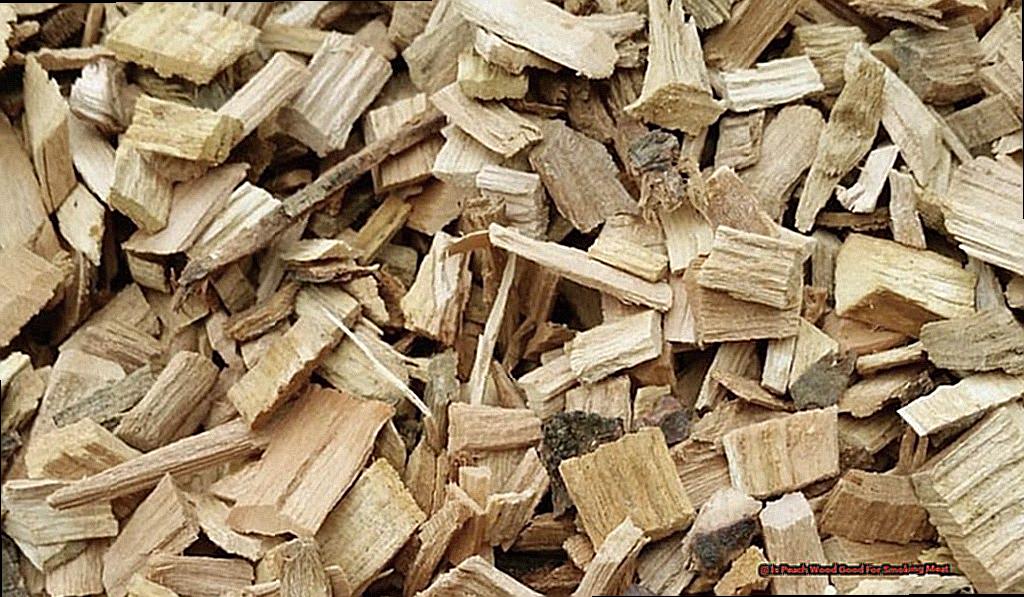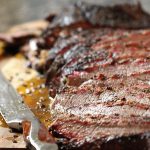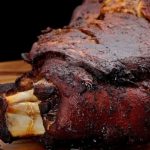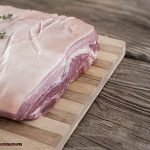Are you tired of the same old hickory or mesquite wood for smoking your meats? Well, it’s time to shake things up and give peach wood a try. This underestimated wood has been gaining traction among BBQ enthusiasts for its distinct flavor and impressive advantages. So in this blog post, we’ll delve into why peach wood is a game-changer for smoking meat. Get ready to be tantalized with some key points:
- Peach wood adds a delightful sweet and fruity essence to your meat, perfect for those who prefer a milder taste.
- It burns slower and more evenly than other types of wood, making it ideal for long smoking sessions.
- The natural sugars in peach wood caramelize on the surface of the meat, creating a mouthwatering crust.
- It pairs perfectly with various types of meat, from succulent pork and tender chicken to flaky fish and even hearty vegetables.
- Not only does peach wood enhance your BBQ experience, but it also promotes sustainability as it comes from fruit trees that are replanted every year.
Why settle for ordinary when you can elevate your BBQ game with peach wood? Keep reading to discover more about its benefits and how to use it for optimal results.
Trust us; your taste buds will thank you.
Contents
Best Wood For Smoking Meat
When it comes to smoking meat, the type of wood used can greatly impact the flavor of your dish. While there are many options to choose from, some popular types include oak, hickory, maple, mesquite, pecan, alder, applewood, and cherry wood. These hardwoods are known for their slow and even burning and unique flavors that can enhance the taste of your meats.
But where does peach wood fit into this mix? Peach wood is a favored choice among pitmasters for its mild and sweet flavor. It also has a high moisture content, making it ideal for long smoking times without constantly monitoring. However, proper preparation is essential when using peach wood for smoking meat.
First and foremost, it is crucial to use cured hardwoods when smoking meat. This means that the wood has been dried for 3 to 12 months through natural air-drying or in a kiln. Freshly-cut or green wood contains too much moisture and sap, resulting in uneven burning and unpleasant flavors.
Peach wood can be easily found in various forms such as chips, chunks, and logs. Chips are perfect for shorter smoking times while chunks and logs are better suited for longer cooking times. It is recommended to use wood from trees that produce nuts or fruits you enjoy eating as this will enhance the overall flavor of your meat.
However, adding too much wood can result in an overpowering smoke flavor and bitterness in the meat. Thus, it is vital to use wood in moderation and not go overboard with it.
Lastly, it is crucial to avoid using softwoods or chemically treated wood when smoking meat. These types of woods can produce harsh smoke and may have negative effects on your health.
Best Types Of Wood For Smoking Meat
When it comes to smoking meat, there are three types of wood that stand out above the rest: hickory, apple, and maple. These woods have been beloved by BBQ enthusiasts and pitmasters for their exceptional qualities and ability to elevate the taste of smoked meat.
Hickory is a popular choice for smoking meat due to its strong, smoky flavor. It adds a rich, savory taste to meats such as ribs, brisket, and pork shoulder. Its bold flavor profile can sometimes be overpowering, so it is best used in moderation or mixed with other milder woods.
Apple wood offers a sweeter and fruitier flavor compared to hickory. It pairs well with pork, poultry, and fish, adding a subtle sweetness to the meat. It also produces a light smoke that is perfect for shorter cooking times.
Maple wood is another favorite among smokers for its mellow and slightly sweet flavor. It is a versatile wood that can be used with a variety of meats such as beef, pork, and poultry. Its mild flavor allows the natural taste of the meat to shine through while still adding a hint of smokiness.
Each type of wood offers a unique flavor profile that can enhance the taste of different types of meat. Experimenting with different combinations can lead to new and delicious flavors. For example, mixing hickory and apple wood can create a balanced blend of sweetness and smokiness.
In conclusion, when it comes to smoking meat, hickory, apple, and maple are the top contenders for achieving the perfect flavor. So next time you fire up your smoker, consider using one (or a combination) of these woods to take your meat to the next level.
How to Add Wood the Right Way?
To add peach wood to your smoker, follow these steps for optimal results:
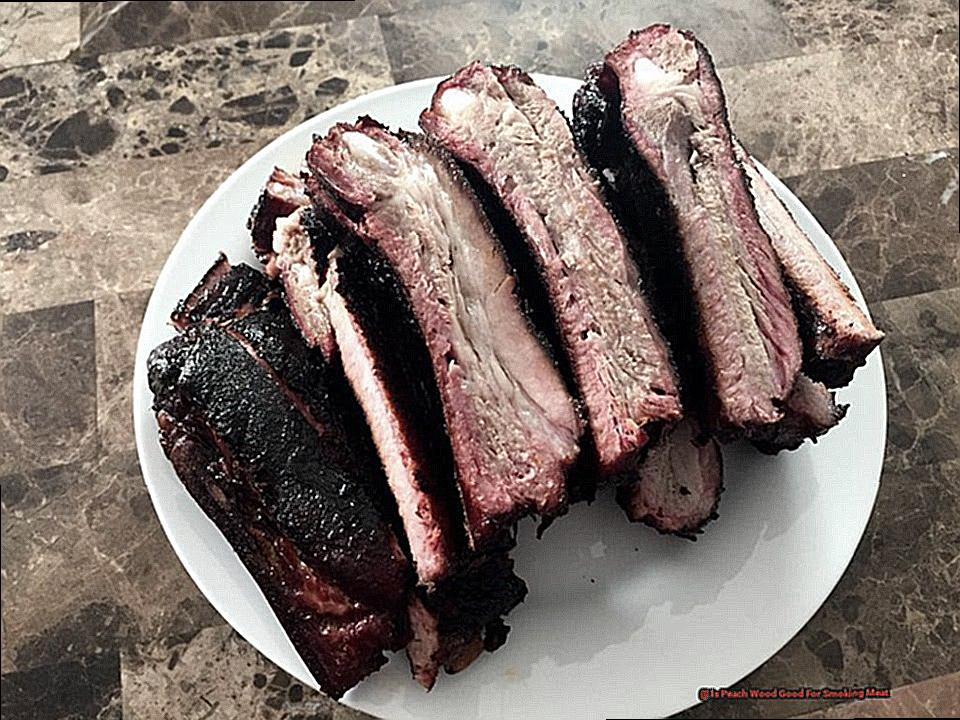 Choose from a variety of forms such as pellets, chips, chunks, or split logs based on your smoker.
Choose from a variety of forms such as pellets, chips, chunks, or split logs based on your smoker.
| Step | Description |
| 1 | Prioritize curing and drying the wood before use. |
| 2 | |
| 3 | Place the desired amount of peach wood on hot coals or in the designated tray of your smoker. |
| 4 | Monitor the temperature and adjust accordingly while allowing the smoke to infuse into the meat for several hours. |
| 5 | Savor the subtly sweet and fruity flavors that peachwood adds to your smoked meats. |
Ensure that the peach wood is properly cured and dried before using it in your smoker.
- To achieve even burning and consistent smoke production, peach wood must be aged and dried for a few months.
- This preparation process is crucial for a successful smoking experience.
- Select the appropriate form of peach wood for your smoker, such as pellets, chips, chunks, or split logs.
- Each form offers unique benefits and is suitable for different types of smokers.
- Consider the needs of your smoker before making a decision.
- Place the desired amount of peach wood onto hot coals or into the designated tray of your smoker.
- For charcoal smokers, place the peach wood directly onto hot coals.
- For electric or gas smokers, use the designated tray for smoking wood.
- Allow the smoke to infuse into the meat for several hours, monitoring the temperature and adjusting it as needed.
- The length of time required for the meat to absorb the smoke will vary depending on its type and size.
- Keep a close eye on the temperature to avoid over-smoking or under-smoking the meat.
- Indulge in the delicate and fruity flavors that peach wood adds to your smoked meats.
Wood To Avoid For Smoking
Smoking meats is an art that requires precision and attention to detail. It’s not just about the type of meat, but also the type of wood used for smoking. Not all wood is created equal when it comes to imparting flavors into your BBQ.
In fact, some woods can ruin your entire smoking experience by adding unpleasant or even harmful tastes to your meat. To ensure the best results, it is crucial to know which types of wood to avoid when smoking meats.
- Softwoods: Softwoods like pine and spruce may seem like good options at first due to their abundance, but they should be avoided when smoking meats. These woods are high in resin, which can leave a strong and bitter taste in your meat that may be difficult to mask.
- Treated wood: Any wood that has been treated with chemicals or paints should never be used for smoking meats. These chemicals can be toxic when burned and can contaminate your food, resulting in health hazards.
- Woods with strong oils: Some woods, such as eucalyptus and liquid amber, may have a pleasant aroma, but they contain strong oils that can create undesirable flavors in your smoked meats. It’s best to steer clear of these types of wood when smoking.
- Green or unseasoned wood: Using freshly cut or unseasoned wood can also lead to a bitter taste in your meat. As the wood releases moisture and steam during the smoking process, it can affect the overall flavor of your meat.
- Lumber scraps: It may be tempting to use lumber scraps or processed wood for smoking, but this is not recommended. These types of wood often contain chemicals and toxins that can be harmful when burned and may negatively impact the taste of your BBQ.
In general, it is best to use cured (air-dried) wood for smoking meats. This allows the wood to release its natural flavors without any unpleasant or harmful effects. Some recommended woods for smoking include hickory, mesquite, and oak, all of which have been dried out for at least a year.
How to Smoke Meat with Wood?
When it comes to smoking meat, there are a multitude of advantages to using peach wood.
This type of wood boasts a gentle and sugary essence, along with its density, moisture levels, accessibility, and adaptability.
The subtlety of its fruity flavor enhances the taste of the meat, and it pairs well with a variety of meats. Furthermore, peach wood can be used in different forms, including pellets, chips, or chunks. Its density allows for a slow and consistent burn, resulting in a steady stream of smoke.
Additionally, the high moisture content of peach wood helps to retain the juiciness of the meat during the smoking process. This type of wood is also widely available in most regions, making it easy to source from local producers.
Conclusion
In conclusion, it’s time to shake things up and give peach wood a chance to enhance your smoking experience.
This often overlooked wood offers a delightful blend of sweet and fruity flavors, perfect for those seeking a more subtle taste. Its slow and consistent burn makes it ideal for extended smoking sessions, while its natural sugars create a delectable crust on the meat’s surface.
Not only does peach wood add flavor, but it also promotes sustainability as it comes from fruit trees that are replanted each year.

